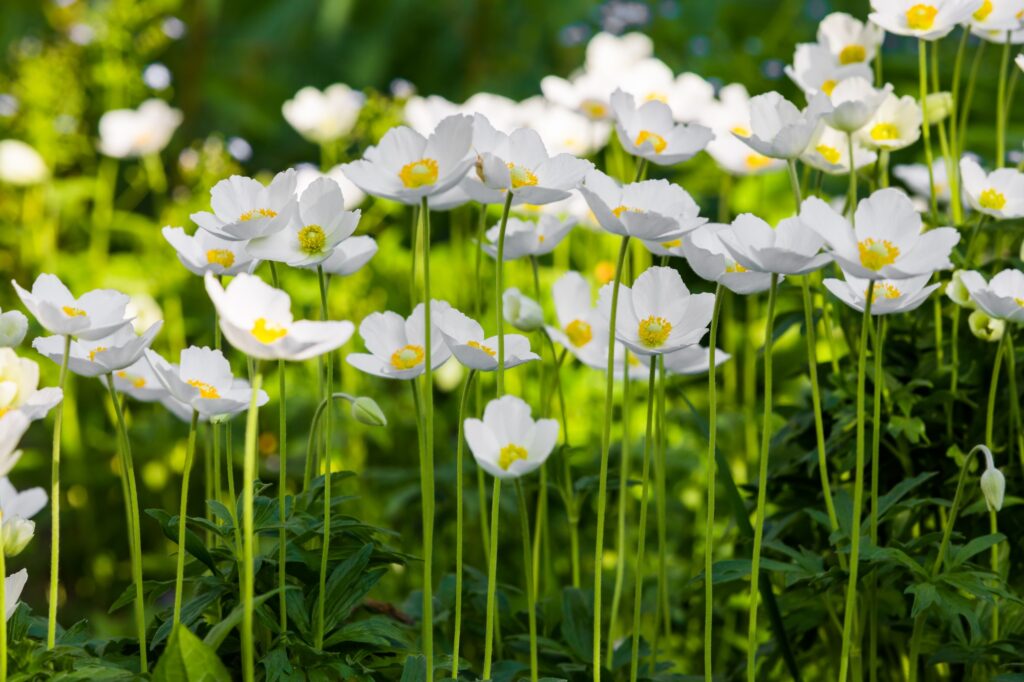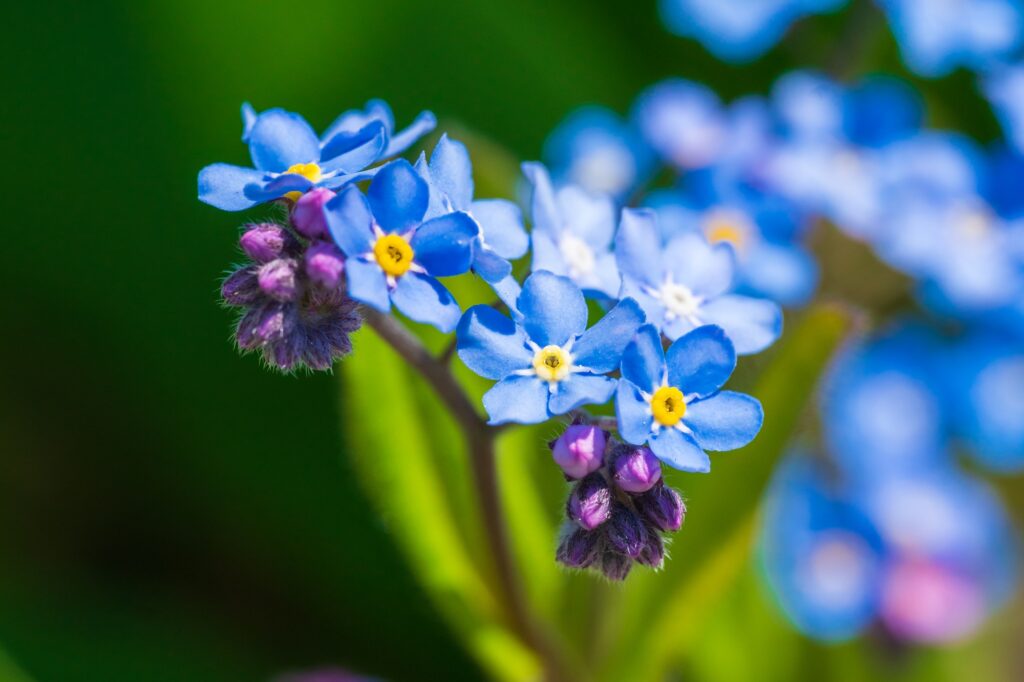If you’re dreaming of colorful meadows, mountain views, and fresh air, wildflowers at Sunshine Meadows are something you simply can’t miss. Every summer, the meadows at the top of the gondola burst into color—it’s like walking into a real-life painting. Whether you’re a hiker, photographer, or just someone who loves nature, this is a place that will fill your heart with joy.
At Ten Peaks Shuttle, we’ve helped thousands of visitors get to Sunshine Village without the stress of driving or parking. With our experience in Banff-area travel and deep love for nature, we know just how magical this spot can be. Especially when the wildflowers are in bloom!
Types of Wildflowers You Can See at Sunshine Meadows
The wildflower season at Sunshine Village usually begins in mid-July and lasts until late August. The snow takes time to melt in the high alpine, so summer starts later here than in the valley. Once it does, though, the slopes turn into fields of color.
Here are some of the most common and stunning wildflowers you’ll find during your hike:
1. Indian Paintbrush (Castilleja miniata) – The Flame of the Meadow

- Color: Vivid red, orange, or even pinkish tones. Sometimes, they appear almost glowing in the sunlight!
- Height: About 30–60 cm tall, perfect for standing out among the grasses.
- Bloom time: Typically mid-July to August in Sunshine Village, when the meadows are at their brightest.
The Indian Paintbrush is not just beautiful, it’s also smart. The bright parts that look like petals? They’re actually colored bracts (a special type of leaf). The real flower is small and hidden inside. The bright bracts help attract pollinators like hummingbirds and bees, which is super important for mountain ecosystems.
This flower is considered a semi-parasite. It attaches to the roots of nearby plants to “borrow” some of their nutrients and water, though it still photosynthesizes on its own. This clever survival strategy helps it thrive in the high-alpine areas of Banff National Park.
2. Arctic Lupine (Lupinus arcticus) – The Purple Spikes of Summer

- Color: Shades of deep violet to bluish-purple, sometimes with white tips.
- Height: Around 30–80 cm, often taller than most surrounding plants.
- Bloom time: Late June through mid-August, depending on snowmelt and elevation.
Arctic Lupine isn’t just pretty, it’s also important for the soil. Like other legumes, it helps fix nitrogen, enriching the ground for other plants to grow. So it doesn’t just make the landscape look good—it helps the whole ecosystem thrive!
Despite the name “Arctic,” this lupine isn’t limited to the coldest places. It grows well in alpine and subalpine meadows across western Canada. In Sunshine Village, you’ll often find it thriving in open meadows with plenty of sun.
3. Western Anemone (Anemone occidentalis) – The Funny Flower With a Wild Hairdo

- Color: Starts with white petals, later turns into a fluffy silver-grey puff.
- Height: Around 30–60 cm, with seed heads that stand tall above the leaves.
- Bloom time: Flowers appear in late spring, but the fluffy “Western pasqueflower” stage lasts through the summer.
Now for something a little different and a little fun! The Western Anemone might start as a soft white flower, but as the season goes on, it transforms into something truly unforgettable: a fuzzy seed head that looks like a wild, windswept hairstyle! It’s often called “hippie-head” or “moptop” because of its look after blooming. These seed heads are iconic on summer hikes in Banff, and they’re just as loved as the colorful flowers themselves.
The Western Anemone is part of the buttercup family. It’s one of the first flowers to bloom after snowmelt and one of the most photographed thanks to its comical, cottony transformation.
4. Mountain Arnica (Arnica latifolia) – The Golden Star of the Rockies

- Color: Bright yellow with long, daisy-like petals.
- Height: Usually about 20–60 cm tall.
- Bloom time: Late June to early August, depending on elevation.
Bright, cheerful, and easy to spot. Mountain Arnica is like a little drop of sunshine right in the middle of the alpine meadows. With its golden-yellow petals that look like a daisy, it brings warm color to high places, even when the air still feels cool.
Mountain Arnica is more than just pretty, it’s also known for its healing properties. Indigenous communities and herbalists have long used arnica in salves and ointments to treat sore muscles and bruises. Of course, in the wild, it’s best left untouched so everyone can enjoy its natural beauty. You’ll often find arnica growing near trail edges and in sunny clearings at Sunshine Meadows. It’s a hardy flower that thrives in well-drained soil, especially in rocky alpine terrain.
5. Alpine Forget-Me-Not (Myosotis alpestris) – Tiny Flower, Big Heart

- Color: Soft sky blue with a bright yellow center.
- Height: Very short, around 5–15 cm tall.
- Bloom time: Early July to August.
Though small, the Forget-Me-Not is the official flower of Alaska and a symbol of true memory and love in many cultures. Its delicate appearance and striking color make it one of the most beloved alpine flowers in Sunshine Village. Its tiny blue petals and yellow centers are unforgettable, just like its name suggests. You’ll need to look closely, but once you spot them, these delicate blooms create a magical carpet across rocky and grassy areas.
Forget-Me-Nots love moist, well-drained soil and cooler spots, so they often grow in clusters near streams, snowmelt patches, or damp meadows in Banff National Park.
6. Glacier Lily (Erythronium grandiflorum) – The First Sign of Spring

- Color: Vivid yellow with a deep center.
- Height: Around 10–40 cm tall.
- Bloom time: As early as late May or June, right after snowmelt.
When the snow starts to melt in Sunshine Meadows, the Glacier Lily is one of the first flowers to bloom and it’s absolutely breathtaking. With its bright yellow petals that curve backward like little bells, this flower signals the start of wildflower season in the Rockies.
Glacier Lilies are sometimes called “avalanche lilies” because they grow quickly in areas recently covered by snow. Their arrival is a key food source for early-emerging wildlife like grizzly bears and ground squirrels. You’ll often see Glacier Lilies in wet alpine meadows or near melting snowbanks, especially during the early summer months. These flowers grow in clusters and can blanket entire hillsides if conditions are right.
7. Subalpine Daisy (Erigeron peregrinus) – The Purple Sunshine

- Color: Light purple to blue petals with a bright yellow center.
- Height: Usually around 15–60 cm tall.
- Bloom time: July to early September, especially in sunny, open areas.
Imagine a little lavender daisy growing at high altitudes, cheerful, hardy, and always smiling at the sky. That’s the Subalpine Daisy, one of the most common and lovable wildflowers in Sunshine Meadows. These daisies are members of the aster family and can handle wind, sun, and even light frost. That’s why they thrive in Banff’s high-altitude conditions.
Subalpine Daisies grow in big patches, often mixed with other wildflowers. Their colorful petals attract bees and butterflies, making them an important part of the meadow’s natural rhythm.
Final Thoughts: Don’t Miss the Bloom!
The wildflowers at Sunshine Meadows grow in alpine conditions, which means they’re used to high altitudes, rocky soil, and short summers. This environment is harsh, but it creates some of the most colorful and unique flower species you can find in Canada.
The short bloom season also makes them extra special. Blink, and they’re gone until next year. So if you’re planning a visit, make sure to come during peak bloom (mid-July to early August) for the most vibrant experience.
While it might be tempting to pick one of these flowers for a photo or souvenir, remember that picking wildflowers is not allowed in Banff National Park. Let them grow wild and free, so everyone can enjoy them year after year.
Ready to see the bloom for yourself? Want to see these wildflowers up close? Don’t worry about driving or parking. Book a seat with Ten Peaks Shuttle and let us get you there stress-free. Our friendly drivers and local knowledge will make your trip even more enjoyable. Make sure you know the best way to get to the Sunshine Gondola first. Visit Ten Peaks Shuttle to learn more and reserve your ride today.



